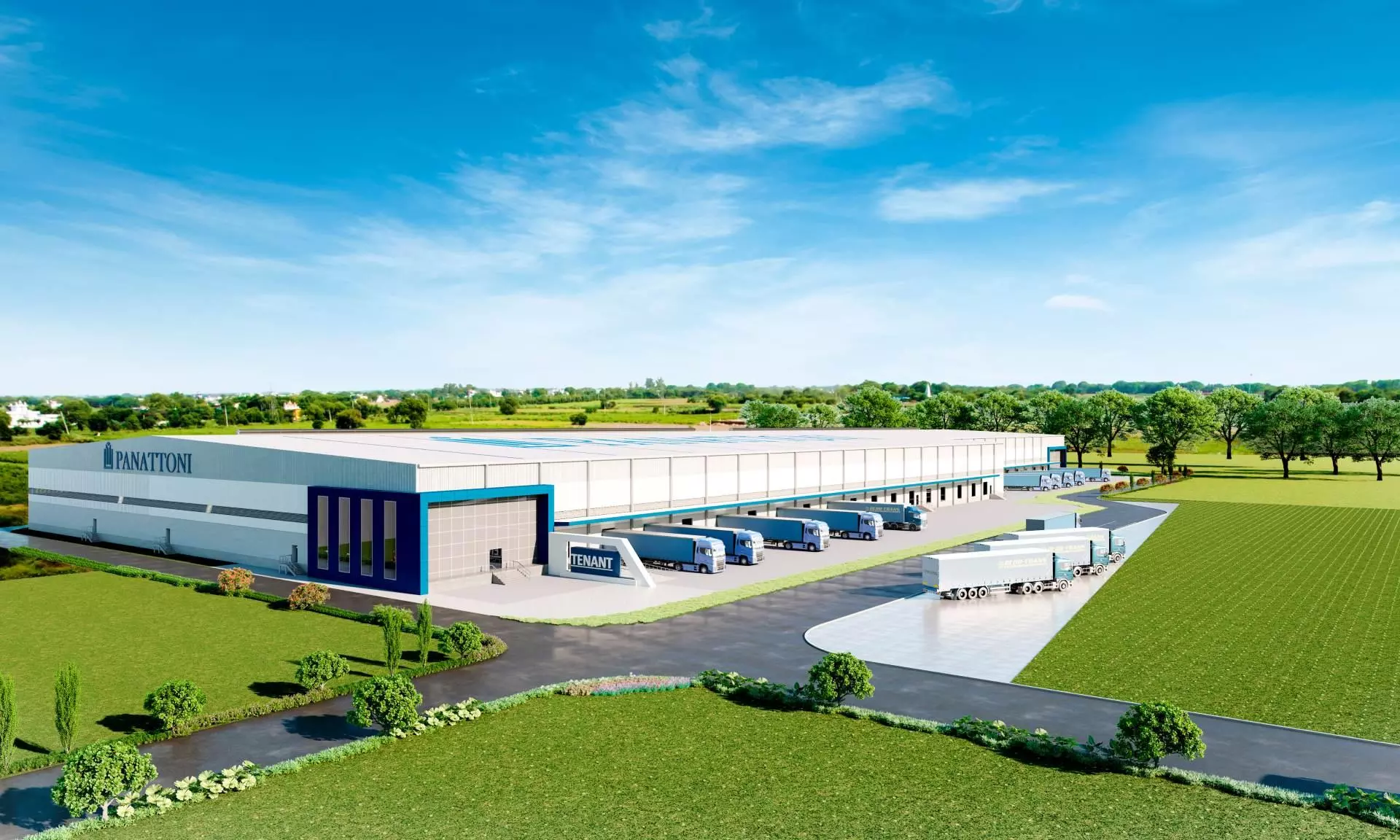Speculative to built-to-own: Panattoni in Indian logistics real estate

As India’s logistics and industrial real estate sector grows rapidly, Panattoni is making its mark in India with a blend of innovative strategies and global expertise. Under the leadership of Managing Director Sandeep Chanda, the company has embraced a client-focused approach, offering everything from speculative developments to customised built-to-own solutions. In this exclusive interview, Chanda discusses Panattoni India’s milestones, growth targets, and the challenges of operating in a dynamic and competitive market, shedding light on how the company aims to lead the transformation of the country’s warehousing and logistics infrastructure.
Can you share your career journey and how you came to lead Panattoni India?
I have been in the real estate sector throughout my career, focusing on commercial real estate. Around 2015, I transitioned into industrial real estate, including warehousing and logistics. At that time, the sector was still in its infancy. Initially, warehouses in India were essentially "go-downs." By 2010-2011, we began seeing the first examples of global-standard warehouses. Over the next decade, the sector evolved significantly with the entry of multiple players, the establishment of zoning and regulatory frameworks, and the emergence of e-commerce as a growth driver.
During this period, I helped build companies, secure funding, and manage portfolios. My tenure with Panattoni began after the Covid-19 pandemic, following the successful sale of a portfolio I had been managing to a private equity player.
Sandeep Chanda, Managing Director India, Panattoni
What sets Panattoni India apart in the competitive logistics real estate sector?
Flexibility is our key differentiator. Unlike many competitors, we are not tied to a single investment strategy or capital source. We work with multiple capital partners globally, allowing us to cater to various project types and locations.
We also focus on client-driven solutions. For instance, we offer a built-to-own model, where we buy land, develop a facility, and sell it to the client. This approach is distinct from many competitors who prioritise asset portfolios for Real estate investment trusts (REITs). We are also exploring development management for landowners who want to retain ownership but need development expertise.
Our agility and decentralised decision-making enable us to act faster and adapt to market demands, setting us apart in this rapidly evolving sector.
How has the investment landscape for logistics parks in India evolved?
The landscape has matured significantly, with the sector being primarily driven by foreign-funded, professionally managed players. Domestic players, too, have entered the market, often backed by foreign capital.
The government’s focus on logistics as a priority sector, along with regulatory clarity, cheaper lending rates, and infrastructure improvements, has facilitated this growth. While speculative development and Greenfield projects remain the norm, we foresee the rise of public REITs as the market stabilizes further.
How does Panattoni’s speculative development strategy work in India?
In India, speculative development involves pre-acquiring land, unlike in Europe or the U.S., where land acquisition follows client commitment. This is driven by client demand for immediate availability.
Speculative development instils confidence in clients, ensures faster project timelines, and secures funding. We often start with speculative construction and shift to built-to-suit (BTS) models as clients finalise their requirements. For logistics, the specifications are largely standardised, making speculative projects easier to adapt to client needs.
Robert Dobrzycki, CEO and co-owner of Panattoni Europe, UK, Middle East & India, lays the foundation stone of Panattoni Park NH71 project in Farukhnagar, Delhi NCR on July 08, 2024
What milestones has Panattoni India achieved since its inception in 2022?
Our first facility, a 370,000-square-foot sustainable warehouse on NH-71 near Farukh Nagar, Haryana, is under construction and on track to be completed by mid-2025. This state-of-the-art facility adheres to global sustainability standards and has already attracted significant client interest.
We are also building a pipeline of projects in Bangalore, Chennai, Mumbai, and Pune. Land acquisition takes time, but we are making steady progress.
What are your growth targets for the next few years?
We aim to deploy ₹800–1,000 crore annually into land acquisition and construction, translating to about $100 million per year. Our targets are ambitious, but we are confident in meeting them by leveraging our global capital partnerships and focusing on Tier 1 cities, where 80 percent of demand is concentrated.
What are the biggest challenges in developing logistics parks in India?
Land acquisition is the biggest challenge due to high costs and regulatory complexities. While government policies have improved infrastructure and lending rates, the approval process can still be time-consuming. Construction costs have stabilised post-Covid-19 pandemic, but global uncertainties like geopolitical conflicts could pose risks.
Despite these challenges, the demand for logistics space remains strong, driven by e-commerce and manufacturing growth.
How are client demands evolving, and what trends are you observing?
E-commerce has been the largest demand driver, accounting for nearly 50 percent of the market (directly and indirectly) in the past. While fulfilment centres remain a priority, we are seeing increasing interest in in-city warehousing to support quick-commerce platforms like Blinkit and Zepto.
There’s also a growing focus on employee well-being, with clients requesting recreational spaces, larger office areas, and even childcare facilities within warehouses. These trends reflect the sector's shift towards holistic infrastructure that caters to operational and employee needs.
Are you planning to expand into in-city warehousing?
Eventually, yes. However, our current focus remains on Grade A facilities in Tier 1 cities. In-city warehousing has potential but faces challenges like high land costs and fragmented demand. We are closely monitoring this segment and will explore opportunities as they arise.
How does Panattoni India’s strategy align with global practices?
While our core business model is consistent globally, we adapt to local dynamics. For example, speculative development in India is tailored to the immediate demands of e-commerce clients. We are also introducing development management services for landowners—a unique offering in the Indian market.
Over the next five years, we aim to differentiate ourselves further by offering a wide range of solutions, including smaller projects, BTS facilities, and built-to-own models.

Libin Chacko Kurian
Assistant Editor at STAT Media Group, he has six years of experience in business journalism covering food & beverage, nutraceuticals and now logistics. His current passion is to understand the nuances of global supply chains and their current turmoil. Outside work, he is also interested in philosophy, history, birding and travelling. Mail him: libin@statmediagroup.com Follow on LinkedIn


